 Fixed-time races are a different breed of ultramarathons. Instead of competing at a fixed distance like 50 miles or 100 miles, the competition involved running the furthest you can in a fixed time. Six-day races became popular in the late 1800s. In 1874 Edward Payson Weston walked 500 miles in six days at Washington State Rink in Newark, New Jersey in front of as many as 6,000 spectators. That started the era of six-day races that would be held for a few decades.
Fixed-time races are a different breed of ultramarathons. Instead of competing at a fixed distance like 50 miles or 100 miles, the competition involved running the furthest you can in a fixed time. Six-day races became popular in the late 1800s. In 1874 Edward Payson Weston walked 500 miles in six days at Washington State Rink in Newark, New Jersey in front of as many as 6,000 spectators. That started the era of six-day races that would be held for a few decades.
In the modern post-war era of ultrarunning the first 24-hour race in America was the 1964 Last Day Run held at the Los Angeles Athletic Club in downtown Los Angeles.
By the early 1980s fixed-time races grew in popularity across the country. The year 1983 was called a “revolutionary year” because 24 hours, 48 hours, and 6-day races that ran in circles, started to pop up all over the country. With more than 30 fixed-time events held that year, including an inaugural race, Across The Years. Many runners started to excel with this format to successfully reach 100 miles. In 1981 about 70 runners reached 100 miles by using this format.
Many ultrarunners felt that this race format was “loopy.” One runner wrote that he believed these events were “reserved for masochists” that they “degenerate into a scene with the majority of the competitors parading ghost-like and crippled around the track for what probably seems to be an eternity. Maybe that’s where St. Peter sends bad ultrarunners.” But most of those who have participated in these races, especially at Across the Years know truth, that it can be an amazing experience, especially because you are always in contact with the other runners who you can get to know well.
Best 24-hour Achievements
What were the best 24-hour performances as of 1983? The world best for 24-hours at that time was 170 miles on the track held by Dave Dowdle of Great Britain, and 170 miles on the road held by Bernard Gaudin of France. The American best of 162 miles (which wasn’t ratified for technical reasons) was set in 1979 by Park Barner at Huntington Beach, California. The official American record was held by Bernd Heinrich of Vermont who ran 156 miles in 1983 at Rowdy 24-Hours on a track at Brunswick, Maine.
Harold Sieglaff
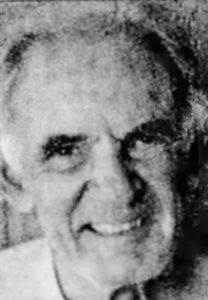

Founding Across the Years in 1983
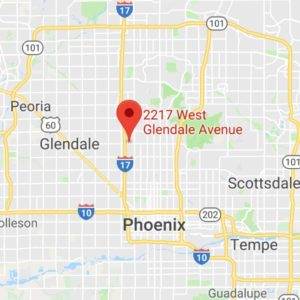

Two elite runners were in the 24-hour race that first year, Lion Caldwell, age 33 of New Mexico, and Steve Warshawer, age 26, also of New Mexico.
Lion Caldwell
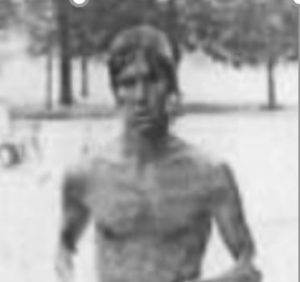

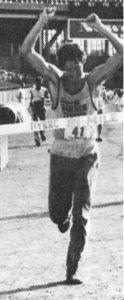

The 1982 the TAC 100 Mile Championship, held at Shea Stadium, was filmed by CBS. ABC’s Good Morning America planned to have the winner on their show. Lion and Stu Mittleman battled intensely for this opportunity. Mittleman won, but Lion finished with another fantastic time of 13:19. That was his lifetime best 100-mile time. He was only the third American to ever run a 100-miler averaging better than 8-minute miles.
So far 1983 had been a rough year for Lion. He said, “January began with two broken ribs compliments of playing basketball. Then in February I turned a lovely shade of yellow, the gracious gift of hepatitis from a patient. It was August ‘till I began to feel semi-human again. In my first try at running after hepatitis, I did a blazing one-mile run in eight minutes and was exhausted. The whole episode showed me I’d taken health too much for granted.” (Marshall, 1983 Ultradistance Summary, 73).
Steve Warshawer
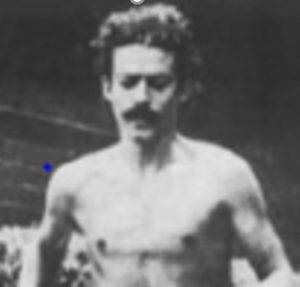

He started to run. Steve described his early running while in college, “I used to run with a guy every afternoon five or six miles. I just started doing it as often as I could, running 14 and 15 miles in a day in the morning before work. I lived in Santa Fe and I’d go right up in the mountains and disappear, and I’d end up on top of some peak looking out over the city. That’s what really got me running, the beauty of the places I could run.” As Steve struggled with his addictions, he knew he needed to change his life. “So I disappeared into the mountains in southern New Mexico and hid out for a couple of weeks without any drugs, sat in the hot springs and ran.”
In 1982 he ran the Boston Marathon and finished in 2:43. He ran Pikes Peak Marathon in 1981 and 1983 finishing 3rd each time. Steve burst on the ultra scene and immediately made an impact finishing very high in his first attempts around 1983. He was 5 feet 6 inches tall and rarely weighed more than 115 pounds and was injured about half of the time.
The 1983 Race
The weather was perfect with temperatures between 70 and 47 degrees. Seventeen runners ran in the 24-hour race and only three others in the shorter times. Harold’s volunteers included Sri Chinmoy disciples who provided aid station duties for the entire 24 hours. Many timers provided selfless service recording lap times manually as “the walkers shuffled around the track aimlessly.”
A nice touch that Harold added to the race were “root flags.” He and his wife displayed state flags around the track representing their life roots and he encouraged others to do the same. He said, “Perhaps in the future years we can add ‘root food’: A New York bagel, Texas taco, Alaskan salmon, Arizona Indian fried bread, Georgia peaches, Idaho potatoes, a Washington apple, Wisconsin cheers, Pennsylvania Quaker oats, etc.”
The race started at 7:00 a.m. Lion and Steve set a blazing fast pace with Lion reaching 50 miles in 6:39, Steve less than a lap behind. All others were well behind and had been lapped dozens of times by the two speedsters. As dusk arrived at the 100K mark, Steve was in the lead reaching that point in an impressive 8:19. Lion was about a mile behind.
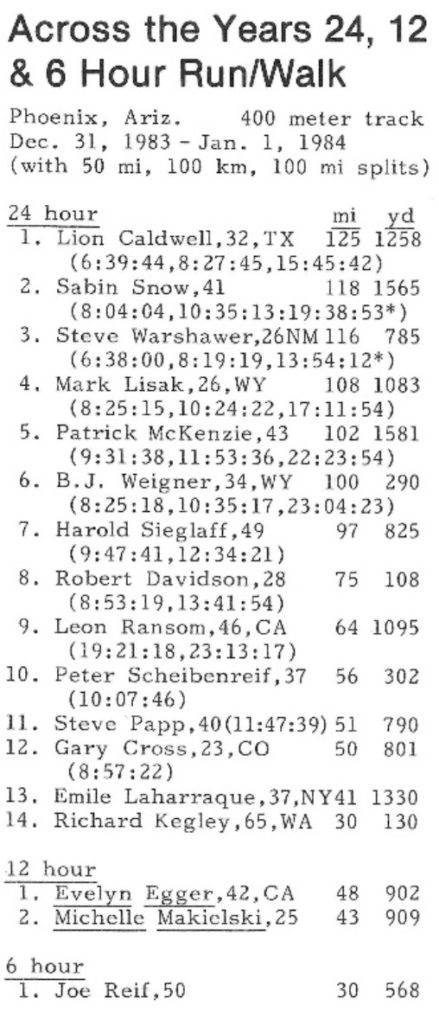

The New Year arrived and Harold wrote; “Pyrotechnics and cries of ‘Happy New Year’ greeted tire movers 17 hours from the start, while an alto recorder sounded, ‘Auld Lang Syne’ and ‘La Golondrina.’
Continuing on Lion passed Steve at the 21-hour mark. Sabin Snow also eventually passed Steve. Lion explained, “[Sabin] refused to be told when he went past 100 miles (he did at 19:38:53) because he accurately said too many people let down after 100 miles.” Lion walked that remaining three hours, winning the race with 125 miles. Sabin finished in second with 118, and Steve in third with 116. Harold reached mile 97. Six of the seventeen 24-hour runners reached 100 miles during this first Across the Years Event.
What is truly amazing about Lion’s victory is that he had only started running slowly again in August since contracting Hepatitis. Ultrarunning historian, Nick Marshall poked fun at Lion, “Well, it’s nice to see a return to health, but Caldwell’s rapid comeback to 24-hour victory is almost calculated to make the rest of us feel inferior. Thanks a lot Lion!”
The first Across the Years was in the books and Harold hoped that it would be an annual tradition for many years to come. It has been. For 2018-19 it is being held for the 35th time. It has attracted many of the greatest fixed-time runners in the world.
Where are they now?
Lion Caldwell went on in 1984 to win the 100-mile national championship in 13:56:26. He repeated as champion in 1986 with a 100-mile time of 13:53, running a one-mile loop around Shea Stadium in the rain. That was his fifth career 100-miler in under 14 hours. In the late 80s he also ran trail 100s at Western States and Vermont but later broke his ankle and had a long recovery. In 1991 Lion was featured in Ultrarunning Magazine as the “Ultrarunning M.D.”
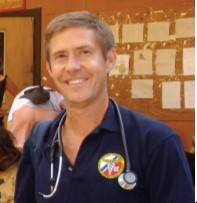

Steve Warshawer, in 1984, moved to Marietta Georgia making a huge impact on southern ultras competing with Ray Krolewicz. They became good friends. In 1985 Steve was ready to take on his first multi-day race, the Atlanta 48 Hour, on a track, the first multi-day race in the South. He won with 191 miles. He ran the 1985 Old Dominion 100 which he said “was the most important competitive race of my life up to now.” He won and broke the course record with 17:11.
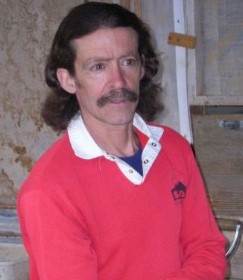

After 1990, at the age of 32, Steve disappeared from ultrarunning seemingly at his peak. He moved back to New Mexico in 1994 to start farming land he had purchased many years ago. Steve still ran marathons, winning the 1996 Taos Marathon in New Mexico with a time of 2:52. He returned to ultrarunning in 2007 at the age of 49 but no longer competed in the mountain 100s. In 2018, Steve, now 61 lives in Santa Fe, New Mexico,
Harold Sieglaff was the race director of Across the Years for many years but passed the race on to others, He was a fixture at the race, running it for 24 years, piling up lifetime miles of 2,555.35. He had the most mile for many years leading by nearly 1,000 miles. He participated in almost every race until 2006. The last few years he walked it wearing street clothes. Because of his knee problems, He did not return to the race after 2006 and passed away on April 23, 2015 at the age of 80.
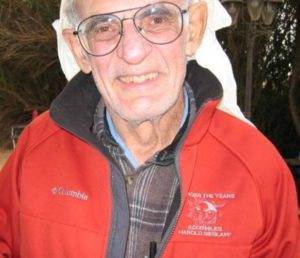

At the 2015-2016 Across the Years, runners ran laps in his honor (foregoing getting credit for the lap on their own results) and accumulated over 100 miles. A 100-mile buckle was presented to Harold’s wife
In 2018 Harod was still 4th on the all-time Across the Year career miles list.
